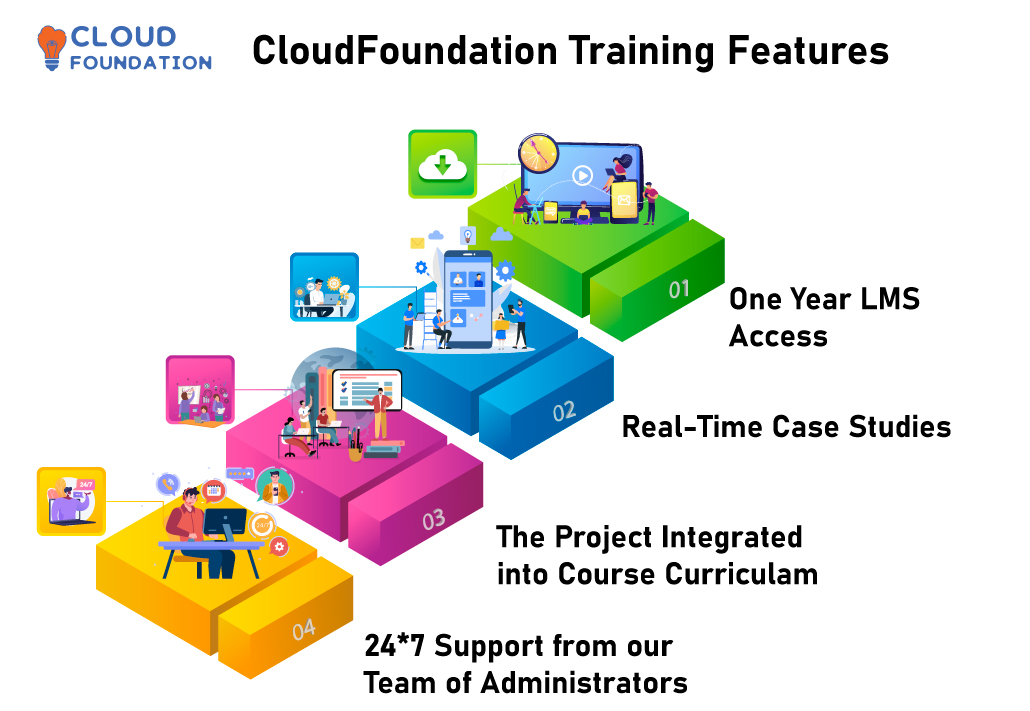Palo Alto Training The only Network Course you need
⏰24 hours | ▶️ 24 Videos | 📣 49 Participants |🎓 2940 Reviews | 4.8 ⭐⭐⭐⭐⭐
Choose a Plan that Works for You
Self Paced
- Advanced sessions
- Interview Q&A
- Free study Materials
- Premium Technical support
Instructor Led Live Training
- Live Instructor
- Advanced sessions
- Interview Q&A
- Premium Technical Support
Corporate Training
- Live Instructor
- Advanced sessions
- Interview Q&A
- Premium Technical Support
Upcoming Batches PST
Weekday
| Dec 09(1 HR A DAY) |
| 07:00 PM PST |
| Enroll Now → |
Weekend
| Dec 29(1 HR A DAY) |
| 07:30 AM IST |
| Enroll Now → |
Weekend
| Dec 27(1 HR A DAY) |
| 07:30 PM IST |
| Enroll Now → |
Upcoming Batches IST
Weekday
| Dec 09(1 HR A DAY) |
| 07:00 PM PST |
| Enroll Now → |
Weekday
| Dec 29(1 HR A DAY) |
| 07:00 PM PST |
| Enroll Now → |
Weekend
| Dec 28(1 HR A DAY) |
| 07:30 AM IST |
| Enroll Now → |
Course Description
Palo Alto Training is an all-encompassing program that teaches you all they need to know to become successful in the field of Network Security and Security Engineering.
The capabilities of the Palo Alto Networks security platform are the primary emphasis of this course, which focuses on the core principles and technology that support such capabilities.
Palo Alto Class is divided into four main sections.
The first part of this lesson will focus on teaching you the foundations of network security as well as security engineering.
This covers a wide range of issues, some examples of which include the features of the Palo Alto Platform, the components of the frame relay protocol, the administration of the organization’s firewall, and the security rules of the Palo Alto platform.
The second section examines the technological hurdles that must be overcome in order to configure and manage the security platform offered by Palo Alto Networks.
You will get an understanding of risk management as well as potential dangers, as well as their own personal weaknesses.
Additional topics that will be covered include the deployment of security rules, security monitoring, and repair methods, protocol security, secure remote access, and SSL/TLS encryption technology.
Part three of this Palo Alto Online Training is dedicated to a comprehensive analysis of Palo Alto Networks’ innovative security offerings.
In this specific sequence, an in-depth study needs to be carried out on the Security Management Console, the Security Services Processor, the Identity-Based Access control, virtual private networks, and threat prevention systems.
Only then you will be able to achieve this objective.
The course’s final unit covers a wide range of material, from traffic analysis and categorization to application annex management to data loss protection.
When you have completed this part of the course, you will have a better grasp of security compliance, how to pick the appropriate security solutions, and how to apply the Palo Alto Networks security platform for applications that are utilized in the real world.
Additionally, the Palo Alto Certification course covers subtopics such as security policy and rule-based administration, diagnostics, reliable backup and recovery, and malware protection.
You will gain knowledge of how to prevent possible assaults while also enhancing the effectiveness of the Palo Alto Firewall as the course progresses.
After successfully completing the course, you will be equipped with the knowledge and abilities necessary to select and protect the most cutting-edge network security solutions now available on the market.
When you have completed the Palo Alto Course and achieved a passing grade will be equipped with the knowledge and skills necessary to effectively protect an organization from threats to its network and attacks on its network.
The acquisition of this information and those abilities is necessary for success.
They will be able to understand the security implications of distributed networks, create and carry out rules for comprehensive security, and protect endpoints from harmful attacks.
This ability will allow them to effectively use the platform.
Seize upon the Palo Alto Training from CloudFoundation, it is the ideal online learning platform for today’s ever-changing digital environment.
Courses include web development basics through cloud computing. You will get 24*7 assistance from our experts to quench your queries.

Course Content
1.Platforms and Architecture
- Introduction of firewall
- Single Pass Architecture and Flow Logic
- Parallel processing of Palo Alto
- Types of firewall
- State full inspection of Firewall
- Packet Filtering Firewall
- Application aware firewall
- Basic Wire shark packet analysis (ICMP, DNS, TCP, UDP SSH, SSL)
2.Initial Configuration
- Initial Access to the System
- Introduction of Palo alto CLI
- Control plane and data plan in Palo Alto
- Difference between Operational mode and Configuration mode
- Configuration Management
- Licensing and Software Updates
- Account Administration
- Difference between Candidate configuration and running configuration
3.Interface Configuration
- Introduction to Security Zones
- Layer 2 deployment of Palo Alto
- Layer2 deployment with logical vlan interface
- Layer2 deployment with same vlan /different vlan
- TAP mode deployment with Scenario
- V-wire mode deployment of Palo Alto
- Layer 3 configuration of Palo Alto interface
- Sub-interfaces Configuration and Inter-vlan Routing
- Service route configuration on interface
- DHCP Configuration
- Introduction of Virtual Router
- Virtual Router Scenario based configuration
4.Security and NAT Policies
- Security Policy Configuration
- Policy Administration
- Interazone, interzone rule and Cleanup Rule
- NAT Configuration
- PAT on Firewall interface
- Dynamic NAT with pool IP
- Proxy Arp concept and understanding
- Static Bi-directional NAT Configuration
- U-Turn NAT Configuration Same zone (double NAT configuration)
- U-Turn NAT Configuration Different Zone (Inter zone)
- Destination NAT configuration on Pool IP (load distribution)
- PORT Forwarding / Static PAT configuration
- External Pool NAT configuration and flow
- Virtual wire Netting configuration
5.App-ID™
- Application ID Signature based Inspection of Palo alto
- Flow Logic of App ID
- Application ID Terms Understanding (Incomplete, Insufficient Data, Unknown TCP/UDP)
- Configuration of APP ID (Security Rule base)
- Custom App-ID signature creation of (URLS for Particular Pattern)
- App ID with Outbound SSL Inspection
6.Content-ID™
- Antivirus
- Anti-spyware
- Vulnerability
- URL Filtering
- File Blocking: Wildfire
7.Encryption /Decryption
- Certificate Management
- Theory of SSL /TLS
- Outbound SSL Decryption
- Inbound SSL Decryption
8.User-ID™
- Enumerating Users
- Mapping Users to IP addresses
- User-ID Agent and LDAP Configuration
9.VPN Configuration
- Theory of IPsec Protocol Suit
- Details of Packets (PHASE-1, PHASE-2)
- Difference between Main mode and aggressive mode
- Difference between Policy based VPN and Tunnel based VPN
- IPSec Tunnels between Palo alto firewall
- IPSec Tunnel between Palo alto and Cisco Device/Checkpoint Gateway
- Implementation of Dynamic routing protocol in Route based VPN (OSPF Configuration)
- Scenario Based Troubleshooting in Palo alto (PCAP File Analysis)
- Advance debug command in Palo Alto for VPN Troubleshooting
- Introduction of remote access VPN
- Global protect VPN configuration / SSL VPN for remote Users
- Global Protect Portal
- Global Protect Gateway
10.Management & Reporting
- Introduction of Dashboard
- ACC (Application command center)
- Basic Logging
- Log Analysis and filtering
- System Alters and log
- Basic Reports
11.Active/Passive High Availability
- Understanding of High Availability
- Palo alto active/passive HA configuration
- Theory of HA Control Link DATA Link
- Palo Alto active /active configuration with Floating ip
- Palo Alto active/active configuration with arp load balancing
- Active/Active NAT configuration
12.Routing Configuration and PBR
- Understanding of Palo Alto Routing table, Forwarding Table
- Understanding of Path Monitoring in Palo Alto
- ECMP (Equal cost Multiple Path) Configuration with Dual ISP
- ECMP Load-Balancing Algorithms
- Introduction of OSPF routing and configuration
- Introduction of BGP routing and configuration
- Policy based routing configuration and testing with dual ISP
- Understanding of Metric and administrative distance (virtual Router)
13.Panorama
- Centralized Configuration and Deployment
- Centralized Logging and Reporting
- Role-Based Access Control
- Difference Between pre rule, post rule and Default rule.
14.Advance Trouble Shooting and packet capture
- Packet dig command use in Palo alto
- Graphic mode packet capture
- Directory system of Pan OS and daemons
- Log capture for live traffic and analysis
- Test policy command for NAT and security Rules
- Use of grep command to search pattern
- Use of mp-log and dp-log in palo alto
FAQ’s
❓ Do you offer any discount/offer?
✅ Yes, offers keep changing from time to time. You can chat with us or call our training coordinator for more details.
❓ Is there any demo video which I can watch before enrolling to the course?
✅ Yes, we have provided a Demo video section on each course page so that you can get a glimpse into the course you want to enroll.
❓ How soon after signing up would I get access to the learning content?
✅ Yes, we will provide access to all the learning materials after the complete payment for the course.
Related Blogs
Drop US a Query
CloudFouɳdation CloudFoundatīonSuggested Courses




MuleSoft Training
⭐⭐⭐⭐⭐
😃 221 Learners




Pega Training
⭐⭐⭐⭐⭐
😃 391 Learners




Rpa Training
⭐⭐⭐⭐⭐
😃 106 Learners




WorkDay Training
⭐⭐⭐⭐⭐
😃 158 Learners
A few of our students
















Contact Us